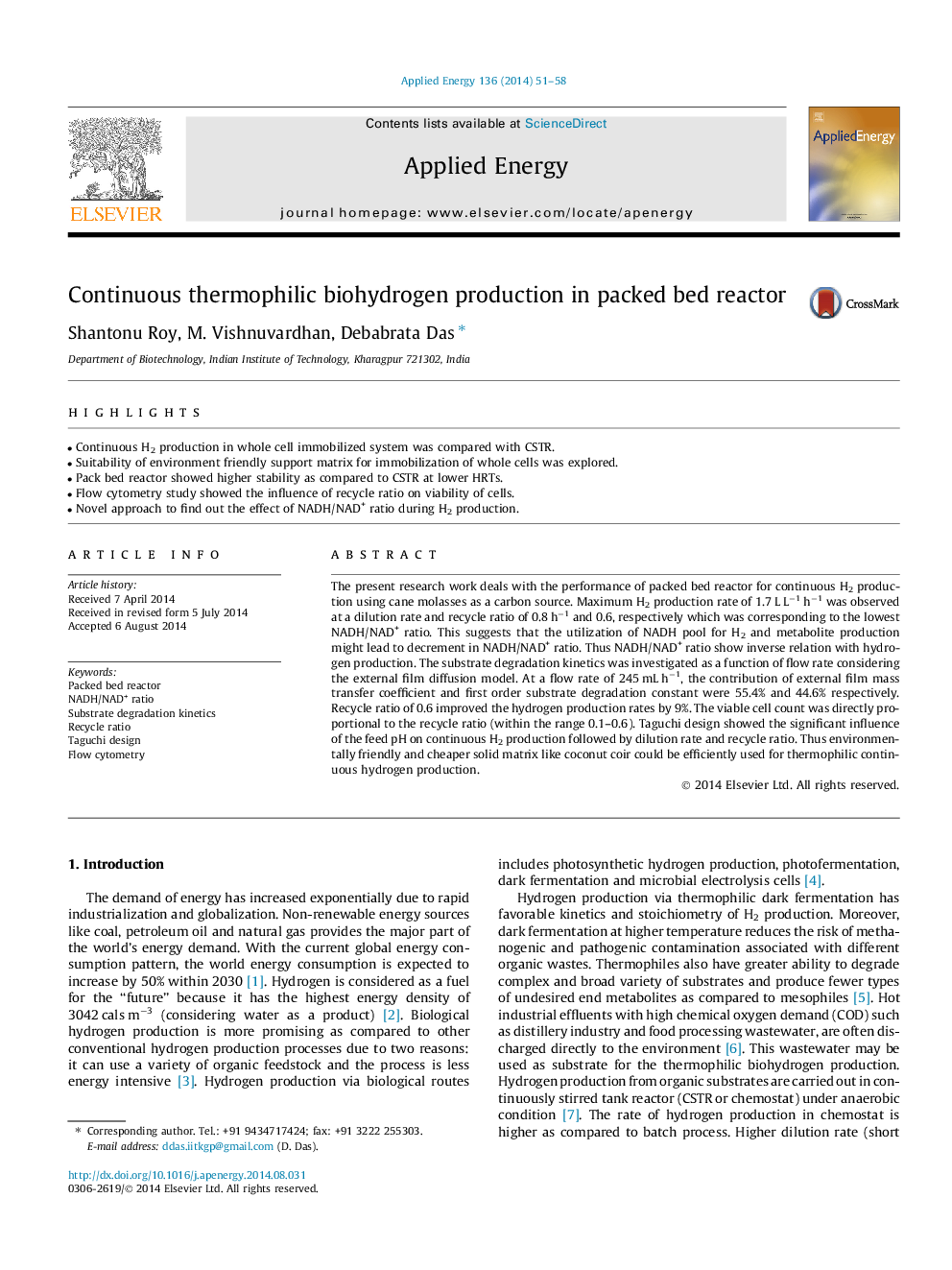| Article ID | Journal | Published Year | Pages | File Type |
|---|---|---|---|---|
| 6688584 | Applied Energy | 2014 | 8 Pages |
Abstract
The present research work deals with the performance of packed bed reactor for continuous H2 production using cane molasses as a carbon source. Maximum H2 production rate of 1.7Â LÂ Lâ1Â hâ1 was observed at a dilution rate and recycle ratio of 0.8Â hâ1 and 0.6, respectively which was corresponding to the lowest NADH/NAD+ ratio. This suggests that the utilization of NADH pool for H2 and metabolite production might lead to decrement in NADH/NAD+ ratio. Thus NADH/NAD+ ratio show inverse relation with hydrogen production. The substrate degradation kinetics was investigated as a function of flow rate considering the external film diffusion model. At a flow rate of 245Â mLÂ hâ1, the contribution of external film mass transfer coefficient and first order substrate degradation constant were 55.4% and 44.6% respectively. Recycle ratio of 0.6 improved the hydrogen production rates by 9%. The viable cell count was directly proportional to the recycle ratio (within the range 0.1-0.6). Taguchi design showed the significant influence of the feed pH on continuous H2 production followed by dilution rate and recycle ratio. Thus environmentally friendly and cheaper solid matrix like coconut coir could be efficiently used for thermophilic continuous hydrogen production.
Related Topics
Physical Sciences and Engineering
Energy
Energy Engineering and Power Technology
Authors
Shantonu Roy, M. Vishnuvardhan, Debabrata Das,
